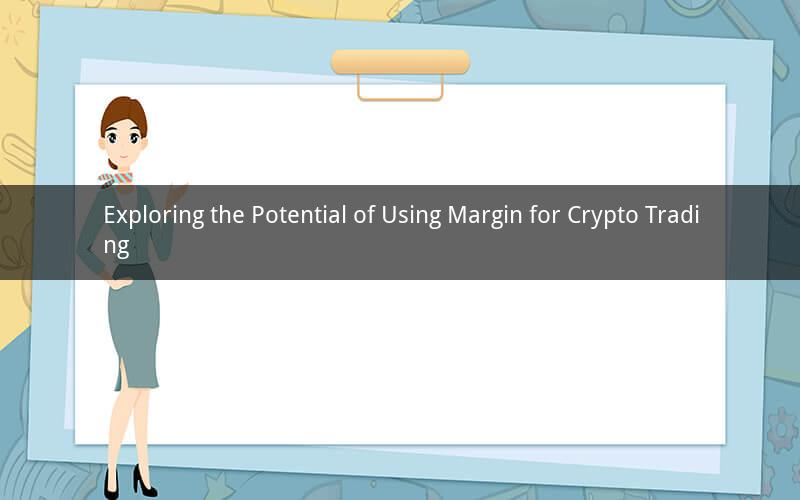
Introduction:
In the world of cryptocurrency trading, utilizing margin can be a powerful tool to amplify gains and enhance trading strategies. But can you use margin for crypto? In this article, we will delve into the concept of margin trading, its benefits, risks, and how it can be applied to crypto trading.
Section 1: Understanding Margin Trading
1.1 What is Margin Trading?
Margin trading is a form of trading that allows investors to borrow funds from a broker to purchase assets, such as stocks, currencies, or cryptocurrencies. By using borrowed capital, traders can leverage their positions and potentially amplify their gains.
1.2 How Margin Trading Works
When a trader decides to use margin, they borrow funds from a broker and use those funds to purchase assets. The trader must deposit a certain percentage of the total value of the trade as collateral, known as the margin requirement. The broker holds this collateral and lends the trader the remaining funds.
Section 2: Benefits of Using Margin for Crypto
2.1 Leverage and Amplified Gains
One of the primary benefits of using margin for crypto trading is the ability to leverage positions. By borrowing funds, traders can increase their exposure to the market, potentially multiplying their gains. For example, if a trader has $10,000 in capital and a 10% margin requirement, they can borrow an additional $90,000, allowing them to trade $100,000 worth of crypto.
2.2 Enhanced Trading Strategies
Margin trading can be a valuable tool for various trading strategies. Traders can use margin to take advantage of market trends, hedge against potential losses, or execute more complex strategies, such as short-selling or arbitrage.
2.3 Access to Larger Positions
Using margin allows traders to access larger positions than they would be able to with their own capital alone. This can be particularly beneficial for those who want to trade larger volumes or execute specific strategies that require substantial capital.
Section 3: Risks and Considerations
3.1 Leverage Risks
While leverage can amplify gains, it also increases the risk of significant losses. If the market moves against a trader's position, the borrowed funds can be used to cover potential losses, potentially leading to a margin call or even a complete loss of the trader's capital.
3.2 Margin Calls and Liquidation
A margin call occurs when a trader's position is in danger of falling below the margin requirement. If the trader fails to meet the margin call, their position may be liquidated, resulting in potential losses. It's crucial for traders to understand the risks and maintain sufficient collateral to avoid margin calls.
3.3 Regulatory Considerations
The availability of margin trading for cryptocurrencies may vary depending on the country and platform. Traders should be aware of the regulatory requirements and limitations in their jurisdiction to ensure compliance.
Section 4: How to Use Margin for Crypto Trading
4.1 Choosing a Broker
To use margin for crypto trading, you need to choose a broker that offers margin trading facilities. Ensure that the broker is reputable, regulated, and offers competitive margin rates and fees.
4.2 Setting Up an Account
Once you have selected a broker, you will need to set up an account and provide the necessary documentation, such as proof of identity and address. Some brokers may require additional verification steps.
4.3 Understanding the Margin Requirements
Before using margin, it's essential to understand the margin requirements of the specific cryptocurrency you want to trade. This will help you determine how much leverage you can use and the potential risks involved.
4.4 Managing Risk
When using margin, it's crucial to manage risk effectively. Set stop-loss orders to limit potential losses and avoid over-leveraging your positions. Regularly monitor your portfolio and adjust your strategy as needed.
Section 5: Frequently Asked Questions
1. Q: Can I use margin for all cryptocurrencies?
A: Not all cryptocurrencies support margin trading. It's important to check with your broker and the specific platform to see which cryptocurrencies are available for margin trading.
2. Q: What is the margin requirement for crypto trading?
A: The margin requirement varies depending on the broker and the cryptocurrency. It's essential to consult your broker for the specific margin requirements for the assets you want to trade.
3. Q: Can I use margin to short cryptocurrencies?
A: Yes, some brokers offer the ability to short cryptocurrencies using margin. This allows traders to profit from falling prices.
4. Q: How can I avoid margin calls?
A: To avoid margin calls, it's crucial to understand the margin requirements and maintain sufficient collateral. Monitor your positions regularly and adjust your strategy if necessary.
5. Q: Is margin trading suitable for beginners?
A: Margin trading can be complex and risky, so it may not be suitable for beginners. It's recommended for experienced traders who have a solid understanding of the market and risk management techniques.
Conclusion:
Using margin for crypto trading can offer numerous benefits, including amplified gains, enhanced trading strategies, and access to larger positions. However, it's essential to understand the risks and consider the margin requirements before diving into margin trading. Always prioritize risk management and seek guidance from a reputable broker to make informed decisions.